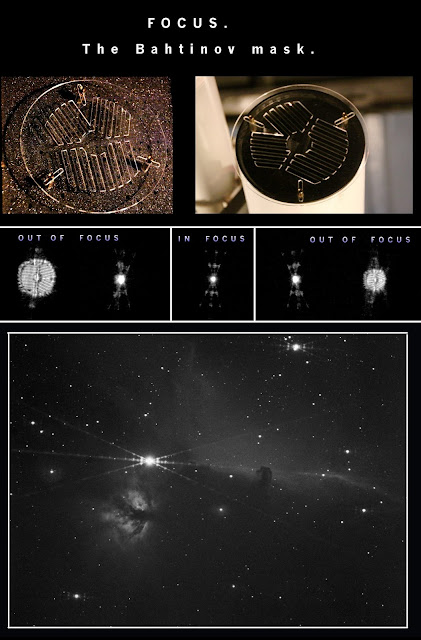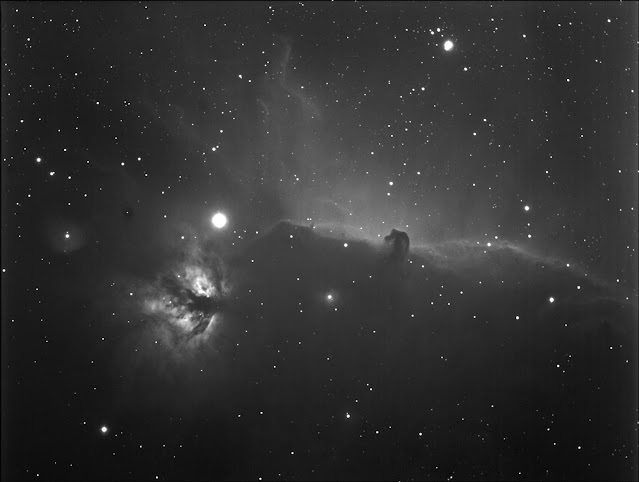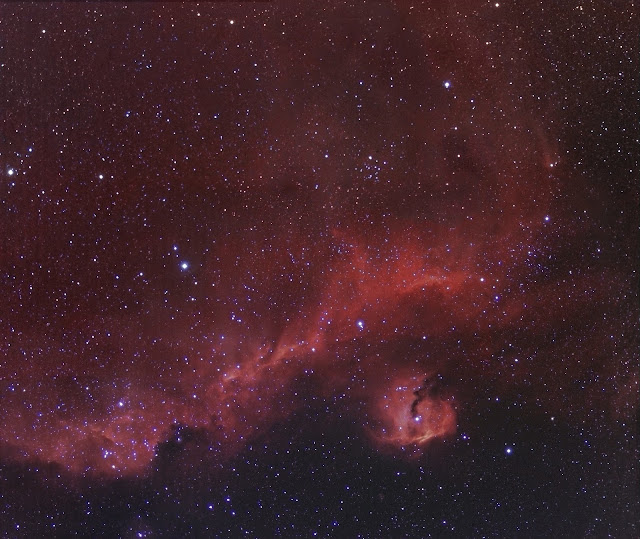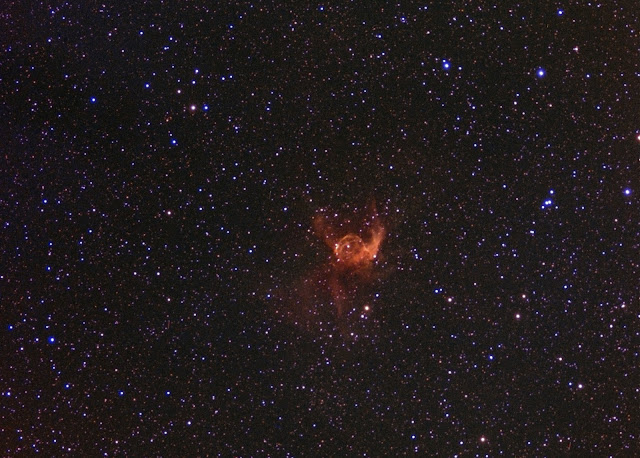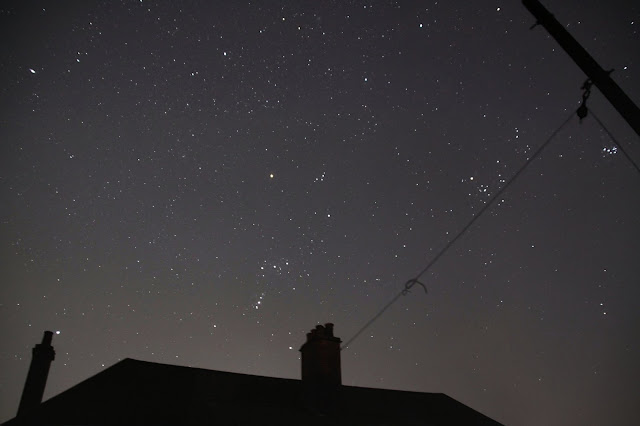A Bahtinov mask in use.
Thursday, 25 January 2024
Wednesday, 24 January 2024
B33. The Horsehead Nebula.
B33. The Horsehead Nebula. This part of the night sky is my favorite. It lies about 1 degree south of the bright star Alnitak the most eastern star on Orion's belt at a distance of 1,500 light years. It is also very challenging to see visually. I can only truly say I have seen once on a very clear moonless night up in the Brecon Beacons national park using a ten inch reflector, a 40mm eyepiece and a Lumicon H Beta filter. However it is not that difficult to image, especially when using narrowband filters, evern in an urban site. The equipment I was using when I was imaging was my 4 inch f/6.3 refractor, a Vixen atlux mount. PHD auto guiding, an Atik 383L mono CCD camera and a set of Astronomik narrowband and RGB filters. I set the camera on X2 bin mode To increase the sensitivity of the camera and captured two minute sub frames. I then combined this data with matching dark frames and flat field frames to reduce the effect of noise and vignetting in the final image. The total exposure time was 1 hour using a blue filter, 1 hour using a H Beta filter, 2 hours and 50 minutes using an O111 filter, 3 hours and 50 minutes using an S11 filter and 13 hours and 7 minutes using a H Alpha filter.
RGB plus narrowband colour
Signal to noise ratio
Here we have an example of signal to noise. Notice the greater the exposure time the less noise in the image increasing the dynamic range of the image.
Closer view
Flat field correction
Here we have an example of taking flat field frames. The first image is of a flat field frame, the second image is an example of B33 taken using light frames and dark frames only and image number three is with flat field correction.
Sunday, 21 January 2024
The Seagull nebula
IC2177, The Seagull Nebula. This large patch of nebulosity lies on the border of Monoceros and Canis Major at a distance of about 3,600 light years. It was discovered by the welsh astronomer Isaac Roberts. The equipment I was using was my 4 inch f/6.3 refractor, a Vixen Atlux mount, PHD auto guiding, an Atik 383L mono CCD camera with a set of astronomik narrowband filters, HA , S11 and O111. I also used a blue filter to try to reveal the colour of the stars. The sky conditions were good with stars visable down to magnitude 5.5. This four section mosaic was taken on three separate evenings. The camera was set on X2 bin mode increasing the camera's sensitivity by four times. I captured two minute subframes with matching dark frames and combined them with flat field frames to reduce the effect of noise and vignetting in the final image. The total exposure time was 30 minutes for each filter.
Hubble palette
Bicolour
RGB
Monday, 8 January 2024
NGC2359, Thor's helmet.
NGC2359, Thor's helmet. I took this image under very clear sky conditions with stars visable down to magnitude 5.5. This patch of nebulosity lies in the constellation of Canis major. I was using my 4 inch f 6/3 refractor, a Vixen Atux Mount, PHD auto guiding, a set of Astronomic narrowband filters with an Atik 383L mono CCD camera. I captured two minute subframes with the camera set on X2 bin mode and matching dark frames and flats to reduce the effect of nose and vignetting in the final image. The total exposure time was 45 minutes in H alpha filter 50 minute in OIII and 40 minutes using a SII filter.
RGB
Bi-colour
Hubble Palette
